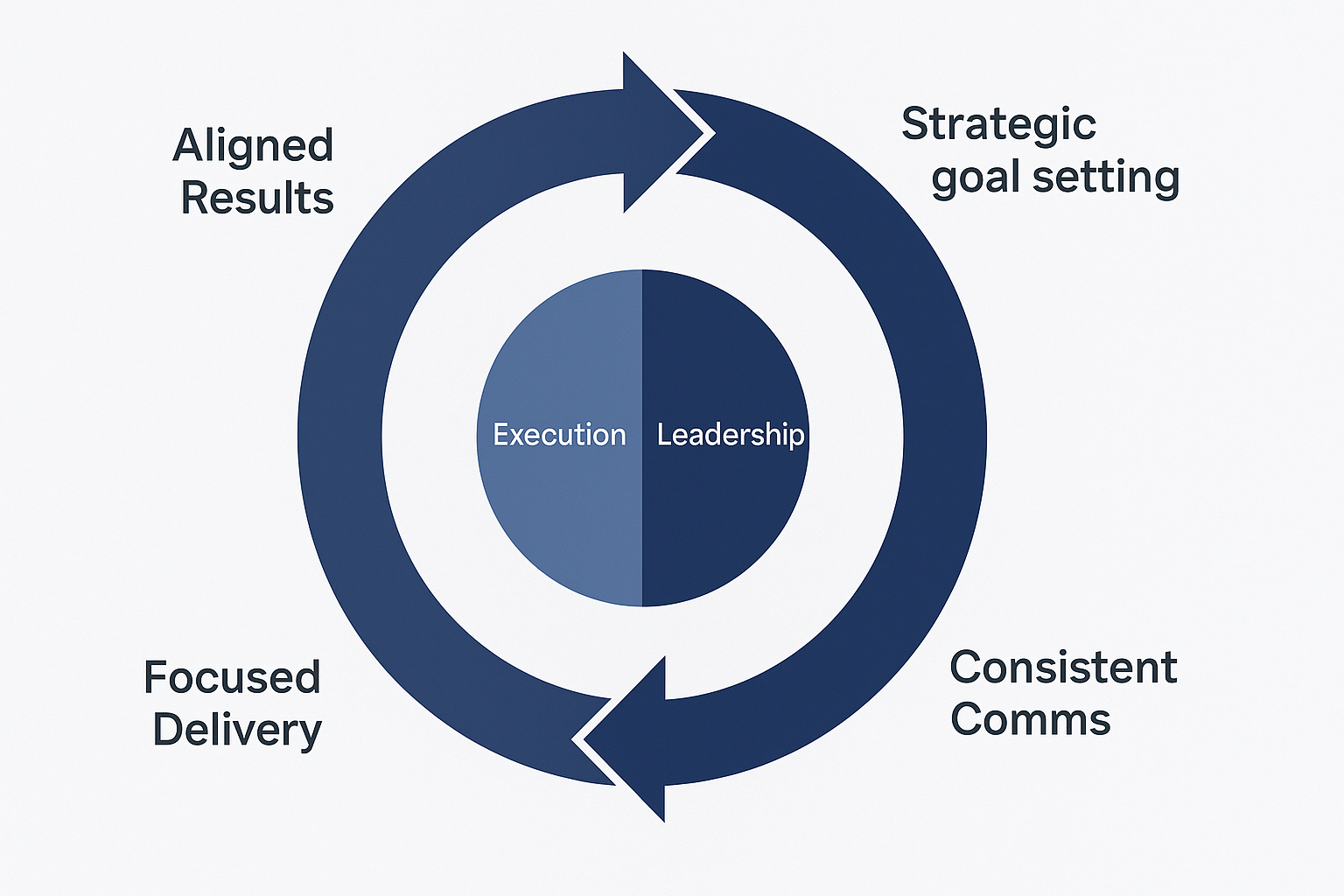The Execution Flywheel: How Weekly Goal Transparency Drives Real Momentum
Because effective execution isn't about more communication — it's about closing the loop between strategy and engineering.

They come from lack of visibility at the execution layer.
Teams drift not because they don't care — but because they're operating without shared context. And if the team can't see the goal, they can't aim at the goal.
I've seen this more than once — but one particular startup where I was brought in to lead product really cemented this lesson for me.
On paper, everything looked like it should work: smart engineers, ambitious objectives, investor backing, strong vision.
But the feedback loop between strategy and execution wasn't actually connected.
Founders, C-levels, Heads of Product — we think the team knows the priorities because we're thinking about them constantly.
That's where the flywheel breaks.
And the cost of that gap is far more subtle — and far more expensive — than most leaders realize.
The Fidelity Problem: Leaders Want to Communicate — But Don't Have the Cycles
Oftentimes, leaders don't communicate goals downward consistently because they're carrying everything in their heads — board expectations, financials, risks, investor feedback, strategic dependencies. And they assume they need a 40-slide deck to do it justice — which is overwhelming.But it doesn't — and actually, it shouldn't.
People tune out at that fidelity. They're not trying to operate at the boardroom layer.
They're trying to make dozens of micro-decisions inside Jira tickets.
They just need the north star and the constraints — not the entire investor narrative. Which is why my rule is:
10 minutes, once a week, is enough to keep everyone aligned.
Weekly — not quarterly.
Small — not heavy.
"Here are the 3 things that matter most this week, the 1 goal we're trying to move, and what changed from last week." Then supplement that with one email + one evergreen Notion page.
That's it.
The Real Unlock: Consistency Creates Cascading Alignment
Small, consistent pulses are what actually create cultural resonance. It's not the volume of communication that creates alignment — it's the rhythm.Patterns matter. Humans learn from repetition.
Weekly communication builds:
- shared ownership
- skin in the game
- reinforcement of priority
- visibility into tradeoffs
- clarity in sequencing
But here's the real unlock: it cascades down the stack.
If leadership models consistent weekly goal-tracking — teams naturally adopt consistent sprint cadences.
The way you talk about goals becomes the way they talk about execution.
Leaders set the tone → teams replicate it.
The twist: you're likely already doing 80% of this
This is the funny part most leaders don't realize.You're already checking the numbers. You're already reviewing metrics. You're already making prioritization calls in your head.
Facepalm moment: leaders aren't short on data — they're short on formatting.
This isn't a new workload, it's a 10-minute export of thinking you're already doing.
Here's a template I use — literally copy/paste this into email / Slack / Notion (review in standup that day):
Weekly Goals Comm Template (copy this)
This quarter's top 3 goals
- G1:
- G2:
- G3:
KPIs — current delta vs target
- KPI1: (current → target)
- KPI2: (current → target)
What impacted last week's results
- item 1
- item 2
- item 3
This week's focus priorities (and why)
- item 1
- item 2
- item 3
What's blocked / what we're saying "no" to
- item 1
- item 2
- item 3
What's coming next / what to pre-load mentally
- item 1
- item 2
- item 3
It fits on one screen. It takes 8–12 minutes. It replaces hours of confusion downstream.
And here's the best part: you don't even have to be the one who writes it.
You can:
- delegate this to a junior ops person
- or automate 60% of it via tooling
- or pipe metrics into an agentic AI prompt that generates the weekly update draft
Leaders often underestimate how much of this can be systematized. You don't need 90 minutes. You don't need a deck. You need a rhythm.
The Silent Failure Mode: Quiet Drift
When quarterly goals stay "in leadership's head," teams default to working on whatever they personally think is interesting, urgent, or beneficial.Not maliciously — just logically.
If I'm an engineer, and I don't know the revenue target, then of course I will optimize for the most technically desirable path — not the path that drives conversion this quarter.
Opaque goals create aimless work.
Aimless work produces unpredictable outcomes.
Unpredictable outcomes eventually erode trust.
This is how disengagement starts.
Not with conflict, not with drama. Not even with frustrated feedback.
But with quiet drift.
Bottom Line: It's All About the Flywheel
We usually talk about flywheels in product — but execution has flywheels too.Goal transparency is not "status sharing."
It's the mechanism that closes the loop between the strategy layer and the execution layer.
Strategic goal setting → leadership communication → better execution/decisions → delivering results → new strategic goals/evolution.
That's how you accelerate delivery.
That's how you avoid wasted cycles.
That's how you keep a team focused — without micro-managing.
Because this isn't "more communication."
It's a cleaner loop.
👋 Want Help Closing Your Own Loop?
If your team is struggling with alignment or momentum, this is literally what I help founders and teams solve.
You can reach me here:
→ Hire Me — Fractional Product Leadership to build clarity, rhythm, and results.
Stay ahead of the product game
Get tactical product insights, startup lessons, and frameworks delivered to your inbox. No fluff, just actionable advice from 20+ years in the trenches.